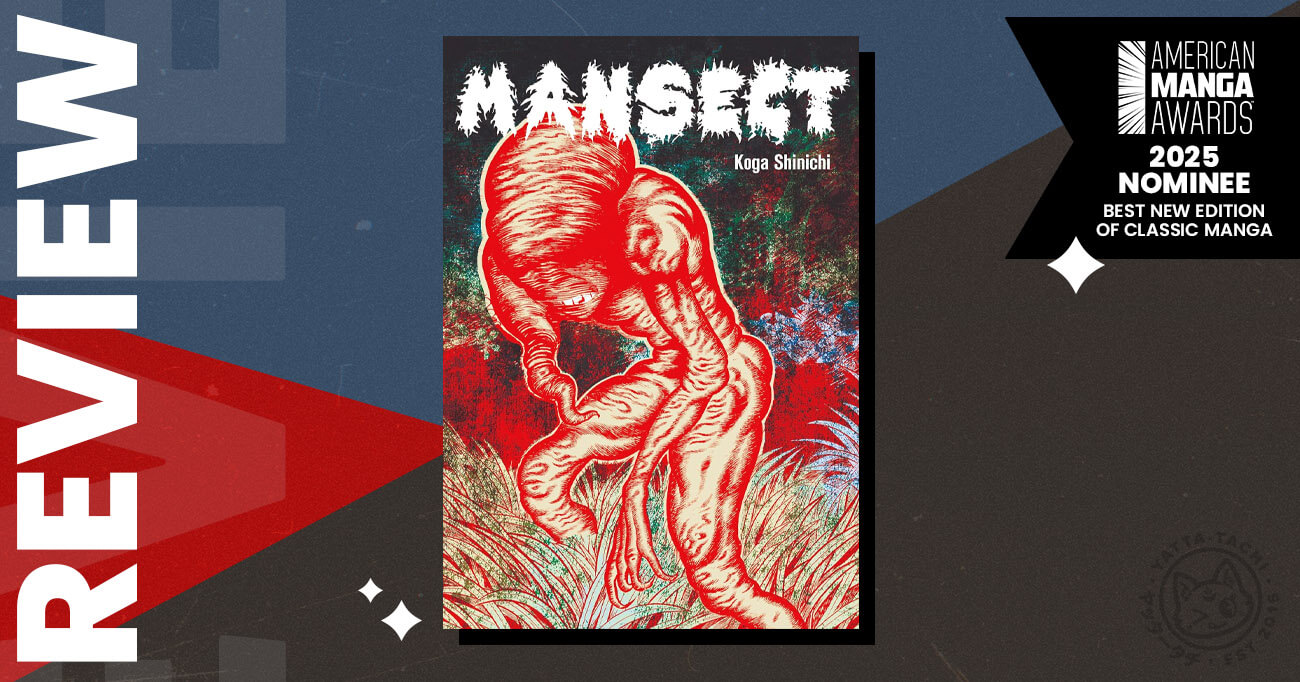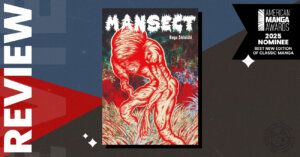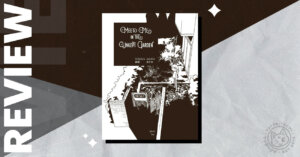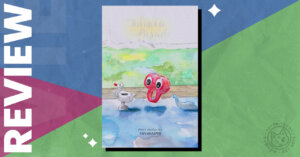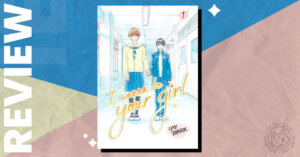Content Warning: Gore, body horror, insects, death
Synopsis
Hideo is a young man who loves insects. Unfortunately, everybody in town thinks he’s a freak. The only person who ever loved him was his mother, and she passed away a year ago. Hideo wishes that he could wrap himself in a cocoon and transform, just like the bugs he loves so much. Then, one of them bites him on the leg. Suddenly, he’s vomiting up a cotton-like substance as his skin warps and deforms. He, too, emerges from a cocoon as a strange new creature between man and insect: a Mansect!
Strange and miraculous events occur all across Japan. A young boy grows old overnight, dried mummies burst open like cicada husks, trees speak in the voices of the dead… Could this plague be a curse on humanity? Or is it instead merely the next stage in its evolution as a species? Only one thing is certain: our day in the sun is coming to an end. The time of the Mansect is nigh.
Metamorphosis
Mansect was a comic series drawn in 1975 by Shinichi Koga. The book’s blurb mentions that he contributed to the anthology magazine Kaidan from Hidari Shobo; his peers there included Sanpei Shirato (The Legend of Kamui) and Goseki Kojima (Lone Wolf and Cub.) Somehow I had never heard of Koga before the publication of Mansect, despite his clear influence on horror manga since. But that’s the manga history language barrier for you. I’m grateful that Ryan Holmberg at Smudge has finally made Koga’s work available to English readers.
What kind of book is Mansect, though? Well, it’s similar to the work of another artist you may be more familiar with: Junji Ito. Like Ito, Koga picks his theme (insects in this case) and then runs it through progressively extreme and gruesome iterations. His infected humans grow old or young, they transform into mummies or rise from desiccated corpses like butterflies. There’s even a twisted talking tree root that I could imagine showing up in Uzumaki without much alteration.
Mansect has no central character like in Tomie (or Koga’s own Eko Eko Azarak). There’s no guiding narrative either, aside from a vague sense that everything is getting worse. It’s left to newspaper articles and a connecting thread of pseudoscientific speculation to convince the audience that they are reading connecting stories rather than a pure anthology.
Fellow travelers
Koga was a contemporary of Kazuo Umezz, whose own magnum opus, The Drifting Classroom, was published just a few years before Mansect. As a big fan of Umezz, it’s fun to compare how he and Koga draw something as basic to their craft as a screaming face. Umezz’s faces are always stylized and distinctly manga-like. He conveys their stress by detailing the eyes and adding lines that convey vibrations. Koga, by comparison, uses thick black shadows and shaded faces that evoke live-action cinema.
Umezz and Koga also diverge in theme. Umezz populates his stories with exaggerated archetypes. His children are pure-hearted and his adults monstrous. Koga, meanwhile, grounds his horror in the banality of life. Multiple characters in the series are teenage boys studying for exams. Their mothers take credit for their accomplishments (if they are doing well) or demand that they study (if they are doing poorly.) Inevitably, these boys mutate into horrible creatures and their mothers regret ever having pestered them about school. I’m sure that Mansect’s readers longed for the same thing back in the 1970s. When faced with the horrors of exams, why not forsake humanity’s boundaries for a life free of expectations?
That cynicism is at the heart of Mansect. Its protagonists are frustrated men who warp under societal pressure. Their transformations are depicted in gruesome detail, and so are the scenes in which they devour their judgemental peers. There is little sympathy to be found for anybody. Even those who show generosity and goodness to others are proven in the end to be naïve. But there is a charm in that. As one of the titular creatures says, “What human feeds off and kills his own kind…? I’m no human! I’m a Mansect! Ha ha ha!”
A matter of taste
Horror is a matter of taste, of course. To give an example from the Smudge line-up, I loved the ending of UFO Mushroom Invasion and its bleak final image. Koga’s priority is not dread or despair but instead, as Stephen King once put it, “going for the gross-out.” Mansect is first and foremost a string of gruesome stories designed to push the reader’s gag tolerance. I respect that Koga was willing to go there back in 1975. At the same time, I found myself missing Umezz’s apocalyptic sense of vision.
A personal sticking point for me is that for a book called Mansect, the monsters don’t look much like insects at all. Instead, they’re large, fleshy and human-shaped, like the Creature from the Black Lagoon. There are a few intriguing hints of something more, like a scene where a mummy metamorphoses like a butterfly and another where a father and his son transform into ants. I’d love to see Koga play more with the uncanny valley effect between human and insect. None of the creature designs in Mansect, though, measure up for me to what new 1970s artist Daijiro Morohoshi was pulling off at this time in series like Yokai Hunter.
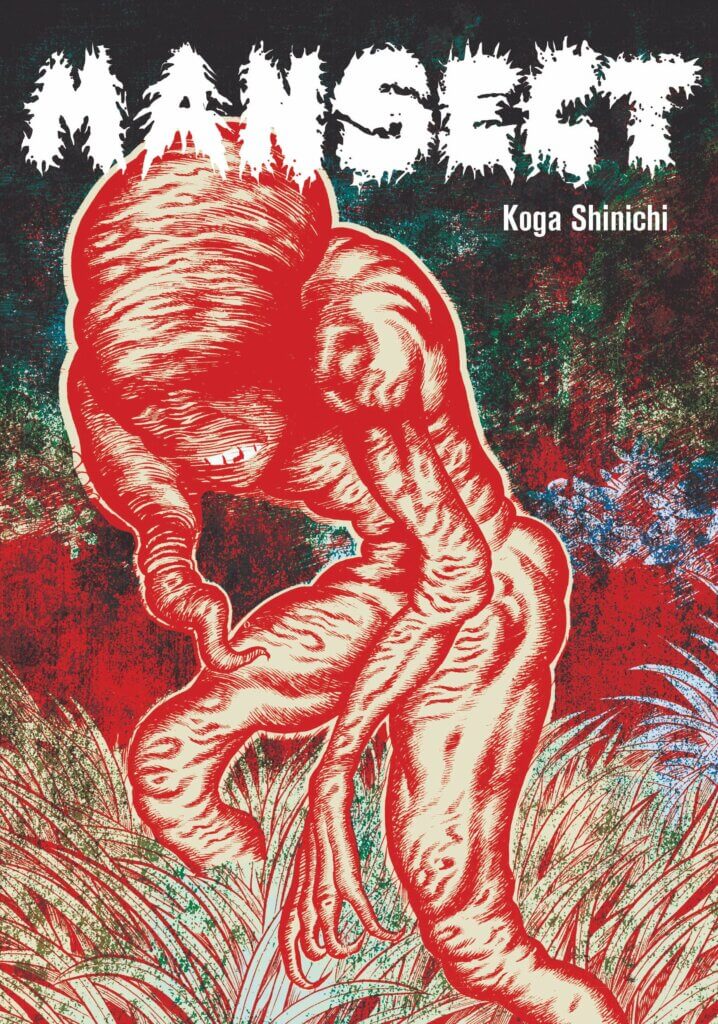
The Verdict
Whether you like Mansect or not will depend on what you want from a horror book. Do you expect comics to look or be written in a “modern” style? Do you expect an overarching story or memorable protagonist? If not, Mansect may not be for you. Just like the EC Comics of the 1940s and 50s, it represents a certain time and place in comic history that has passed. On the other hand, some of those EC Comics are really good, and Mansect can be too, so long as you come to it with the right expectations. It’s gory, slimy, unsettling, and (so far) the only available English language work of a horror manga giant.
Mansect is available to buy at Bookshop, Amazon and Barnes and Noble.
If you like Mansect, you may also like…
- UFO Mushroom Invasion
- The Drifting Classroom
- Uzumaki
Credits
Writer and Artist: Shinichi Koga
Translator and Editor: Ryan Holmberg
Letterer and Designer: Sean Michael Robinson
Published in English by Smudge, an imprint of Living the Line Books
A special thanks to Smudge for providing us with an advance review copy. Receiving early access to this manga has in no way altered the opinions expressed in this article.
Article edited by: Stephanie Liu

Featured Sponsor - JAST
The sweetest romance and the darkest corruption, the biggest titles and the indie darlings; for visual novels and eroge, there's nowhere better.
Big thank you to our supporters
From their continous support, we are able to pay our team for their time and hard work on the site.
We have a Thank-You page dedicated to those who help us continue the work that we’ve been doing.
See our thank you page